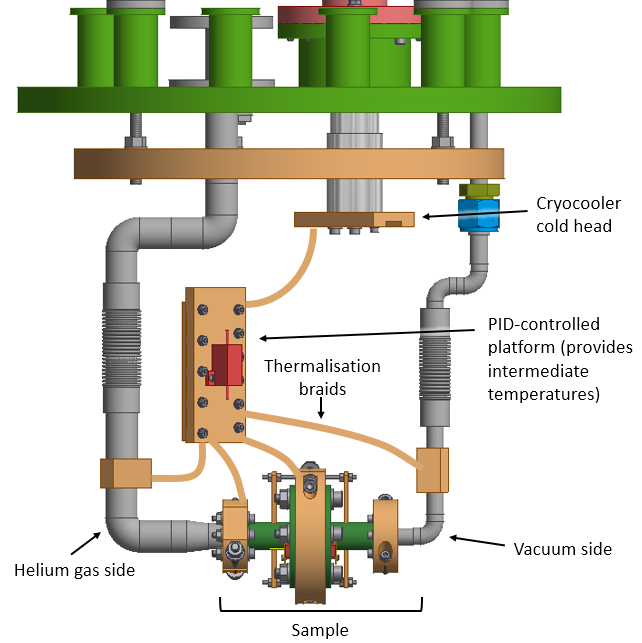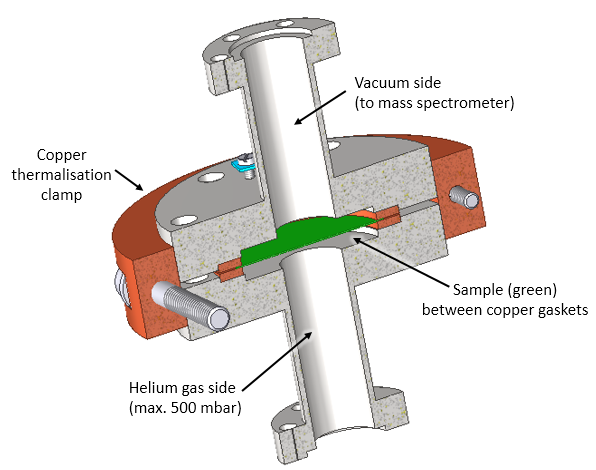Gas permeability through membranes

This test stand measures the helium permeability of membranes such as Mylar, aluminised Mylar, Kapton, etc. by means of a mass spectrometer connected to the vacuum side of the sample. The test stand consists of a cryocooler that cools a PID-controlled intermediate temperature stage that in turns cools the sample membrane and its surrounding gas. One side of the sample membrane is under vacuum and the other side can be filled with up to 1 bara helium gas pressure. The sample and adjacent gas can be cooled to temperatures between 55 K and 250 K, with an additional measurement at room temperature. A thermal shield envelops the experimental set-up, which is then inserted in a vacuum vessel. The sample itself is a 40 mm diameter disk glued between two CF40 copper gaskets.

Ce dispositif expérimental mesure la perméabilité de l’hélium de membranes de Mylar, Kapton ou autres, grâce à un spectromètre de masse connecté au côté sous vide de la membrane étudiée illustrée à droite. Un cryocooler associé à un système de contrôle PID permet de refroidir un étage intermédiaire qui permet de réguler la température de la membrane et du gaz qui l’entoure. Un côté de la membrane se trouve sous vide et l’autre est rempli d’hélium gaz (jusqu’à 1 bar). L’échantillon peut être refroidi à des températures entre 55 et 250 K, avec une mesure additionnelle à température ambiante. Un écran thermique enveloppe le dispositif et l’ensemble est introduit dans une chambre à vide. L’échantillon consiste en une membrane de 40 mm de diamètre collée entre deux joints cuivre CF40, comme indiqué sur la figure à droite.
